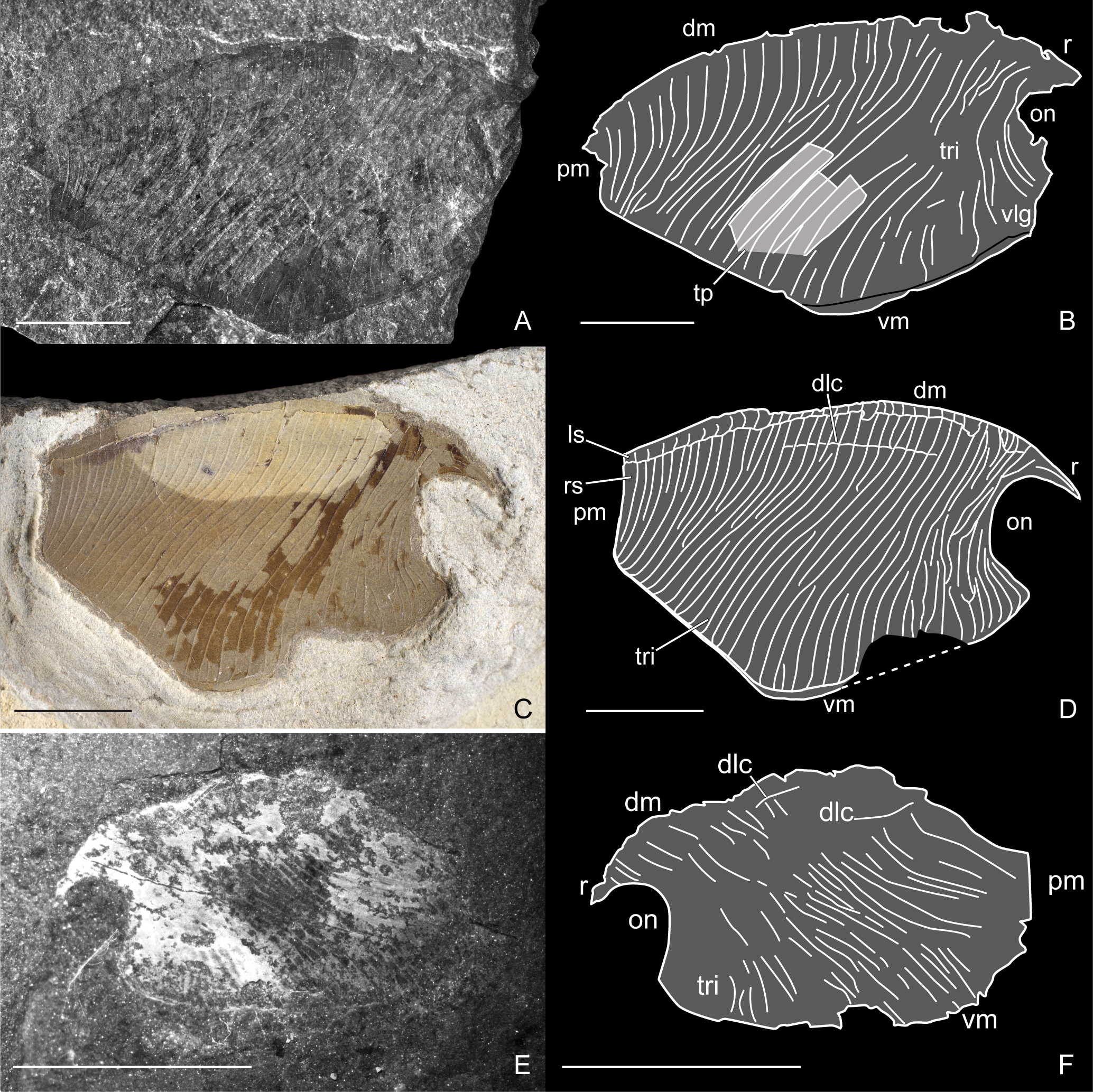REVIEW OF EARLY TRIASSIC THYLACOCEPHALA
DOI:
https://doi.org/10.13130/2039-4942/15188Keywords:
Euarthropoda; biodiversity; Madagascar; Paris biota; Japan; China; cephalic appendages; ornamentation.Abstract
Thylacocephala (Euarthropoda: Eucrustacea?) is a group of enigmatic fossil euarthropods, known from at least the Silurian to the Cretaceous. The Triassic is considered to be the period during which thylacocephalans were the most diversified with 17 species reported from 19 localities in nine countries. However, Thylacocephala were assumed to be rare during the Early Triassic until recent discoveries in Japan, Nevada and Idaho, U.S.A. Our study focuses on thylacocephalans from the Early Triassic, especially from Madagascar and Idaho. The revision of previously known taxa from Madagascar provides new important information. A new kind of ornamentation is reported for Paraostenia ambatolokobensis nov. comb., previously assigned to Ostenocaris ambatolokobensis. In addition, Ankitokazocaris acutirostris and Paraostenia ambatolokobensis are only the third and fourth thylacocephalan taxa for which possible cephalic appendages are described. New occurrences of Thylacocephala in Nevada and Idaho, U.S.A., lead to the description of one new taxon and to the reassignement of Parisicaris triassica to Ankitokazocaris triassica nov. comb. Those occurrences provide a significant contribution to the knowledge of Thylacocephala taxonomic diversity and geographic distribution during the Early Triassic. An important revision of Early Triassic thylacocephalan taxa from Japan and China is also performed, including Ankitokazocaris chaohuensis, Ankitokazocaris parva nov. comb., Ankitokazocaris utatsuensis nov. comb. and Paraostenia sp. Overall, the taxonomic diversity of Triassic thylacocephalans has likely been slightly over-estimated (17 species before, 15 now). However, the Triassic represents the richest period in terms of thylacocephalan-bearing outcrops (19 localities from nine countries).

Downloads
Published
Issue
Section
License
The journal allow the author(s) to hold the copyright without restrictions.






